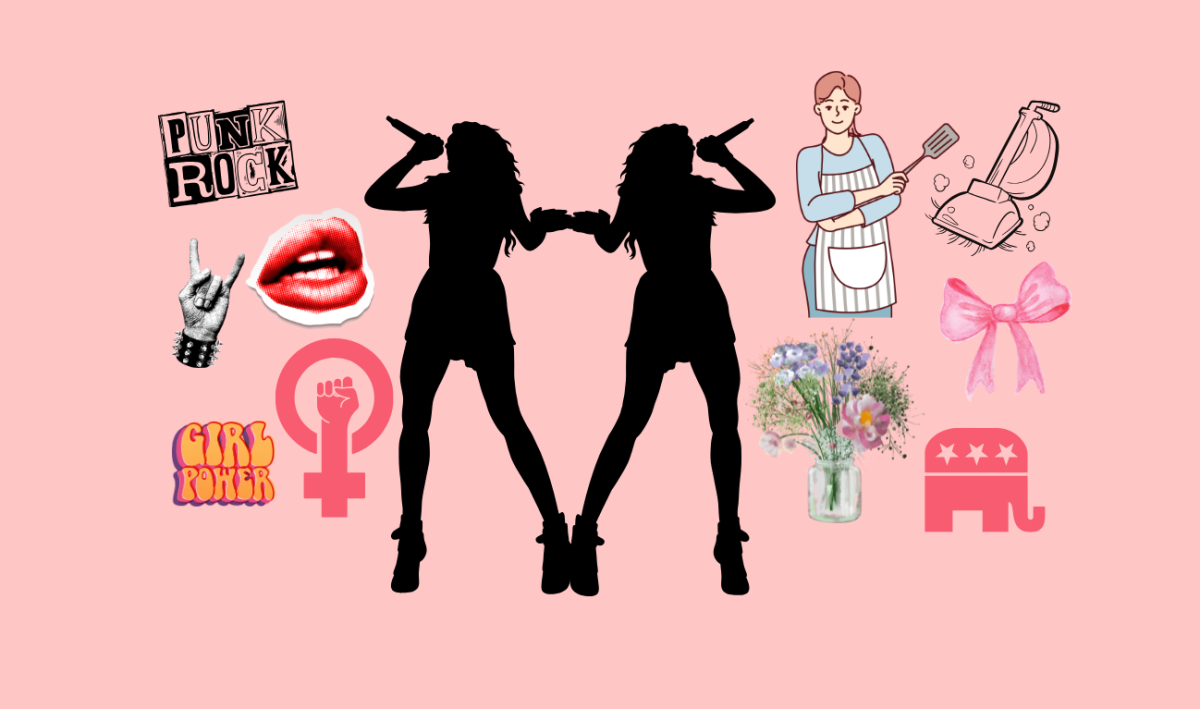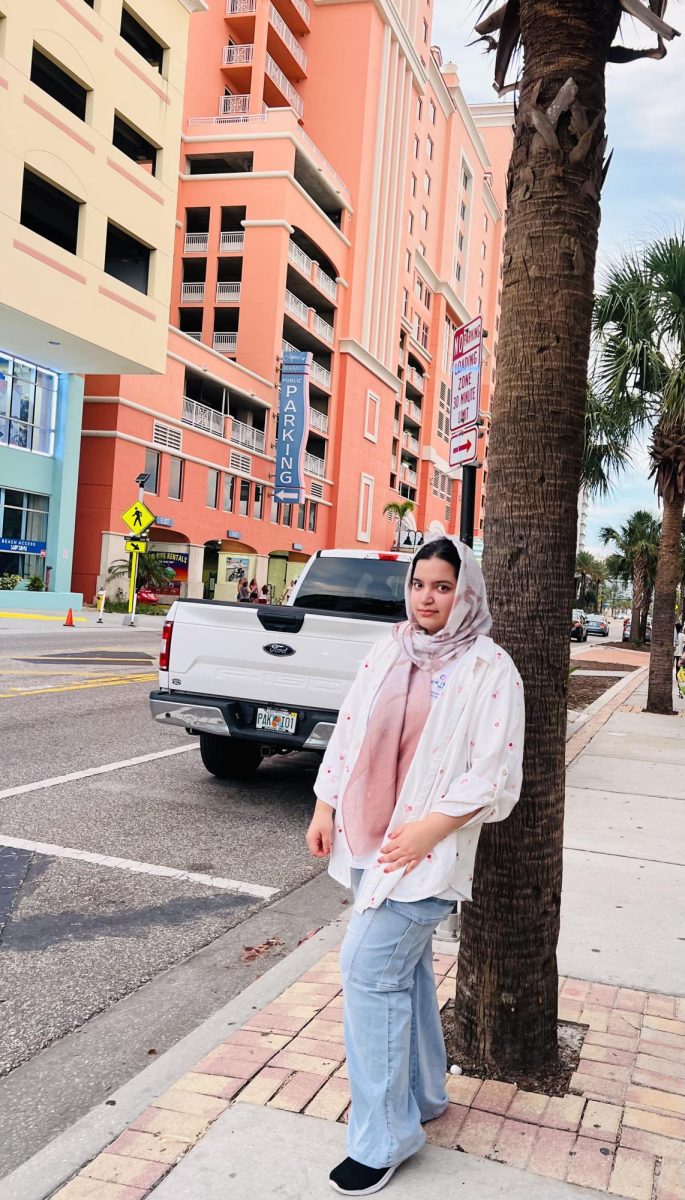I was about 4 or 5 when I heard “Love, Angel, Music, Baby” for the first time. My family had just moved to Austin from New York, where I was born, and amid that time of transition I began discovering my love of pop divas, like Lady Gaga and Beyoncé. But Gwen Stefani epitomized cool in a way I’d never seen before. She managed to merge the idea of a feminist, punk siren with more traditional Hollywood glamour in a way that appealed to me as a kid. Later on, I would realize she was following in the footsteps of figures like Debbie Harry and Cherie Currie, but at the time, lyrics like “your moment will run out ‘cause of your sex chromosome” felt revolutionary.
As a child, I couldn’t process Stefani’s adoption of bindis, box braids and chola makeup as cultural appropriation. Rather, I thought her aesthetic was unique and aspirational. Her song “Harajuku Girls” name checks legendary fashion designers like Yohji Yamamoto and Nigo who revolutionized urban streetwear globally, so initially, I saw the song as praise of Japanese culture—not a mockery of it. Time has proven me wrong.
I listened to songs like “Luxurious” and “What You Waiting For” with the same kind of fervor I imagine followers of ancient Roman cults did. My parasocial dynamic with her music and rebellious persona was also informed by the environment I grew up in. Austin’s metamorphosis into an ostensibly liberal tech oasis during the early 2010s meant that I grew up admiring figures like Malala Yousefzai and Emma Watson. I was raised to believe that women could do anything and didn’t have to compromise their individuality to conform with patriarchal ideals. This was the era of Brave, with a protagonist that incurred media backlash because she was “glammed up” for her inclusion in the Disney Princess doll line. I believed in the promises of fourth-wave feminism. Namely, I believed that in this new cultural climate, girls my age and younger would feel fully comfortable to express their own individuality.
I look back on 2010s feminism with nostalgia and a healthy dose of skepticism. After 2016, the Overton window in America shifted considerably to the right. I remember protesting in middle school when the DACA (Deferred Action for Childhood Arrivals) program was shuttered under the first Trump administration. Of course, the protests were highly ineffective, but they taught me valuable lessons about rhetorical persuasion and political organizing that I will carry with me for the rest of my life. They also taught me that it was still societally considered gauche to be a bossy girl. In 2014, Facebook COO Sheryl Sandberg argued that use of the term “bossy” prevented young girls from reaching their leadership potential, and started the #BanBossy social media campaign. I can confirm, from years of experience as an opinionated girl in public schools, that her efforts were not successful. Indeed, female pop stars like Lana Del Rey carefully worked to avoid being perceived as overly opinionated or abrasive, describing feminism in 2014 as “not that interesting.”
During this timeframe, an artist with numerous similarities to Gwen Stefani and Lana Del Rey in persona and political alignment emerged as an iconic figure of dream pop. Claire Elise Boucher, known to the world as Grimes, released her acclaimed album Visions in 2012, with its sleeper hit single “Genesis.” She went on to release “Art Angels” in 2015, to plaudits from music reviewers everywhere. One review from Pitchfork described the album as a “gilded coffin nail” to misogynistic arguments that female pop starlets are industry plants who don’t put in the studio time to be considered true innovators. But maybe that’s exactly the problem—the coffin nail had to be gilded.
On one track, “California,” Grimes sings that she gets “carried away/commodifying all the pain” and asks why California only likes her “when you think I’m looking sad.” In other words, in order to be seen as an artistic luminary, women have to turn their pain into something tragic, yet beautiful. Lana Del Rey, who 2010s media outlets often accused of romanticizing abuse and trauma also discussed this phenomenon at length. In one song, “Sad Girl,” Del Rey asks “Will you still love me when I shine/from words, but not from beauty?” The preoccupation both artists exhibit with how their beauty and perceived sadness will affect their legacy presents an interesting contrast with how Stefani’s former band No Doubt sang “you really love me/underneath it all.” Then again, Gwen did also sing “I still love to wash in your old bathwater” in relation to a boyfriend on the track “Bathwater” back in 2000, which indicates society was experiencing less regression and more stagnation when it comes to the role of women in pop culture.
But why, 25 years after “Bathwater”’s release, have we struggled to move on from the idea that women should fulfill the expectations of the male gaze? Is looking pretty and exploiting one’s mental health the golden ticket to female pop stardom? Yes. Yes, it is.
As long as white female popstars stand more to gain from aligning themselves with MAGA blowhards like Elon Musk and Tucker Carlson (who Stefani publicly admired an interview of last week), we’re going to see female pop stars who refuse to subvert these norms and instead capitulate to the tradwife aesthetic that’s been gaining popularity on social media for several years. It is becoming more and more apparent in the digital age that it is impossible to reconcile the hypersexuality and beauty politics of female pop stardom with its supposed empowerment of young girls.
In feminist theory, that hypersexuality is called “raunch aesthetics.” Some defend it on the basis of women reclaiming their sexuality, while others claim it reinforces beauty standards that are detrimental to young women. But either way, female pop stars are forced to choose between conformity and individuality. It’s no surprise that Gwen Stefani, Grimes, and Lana Del Rey all chose conformity.







